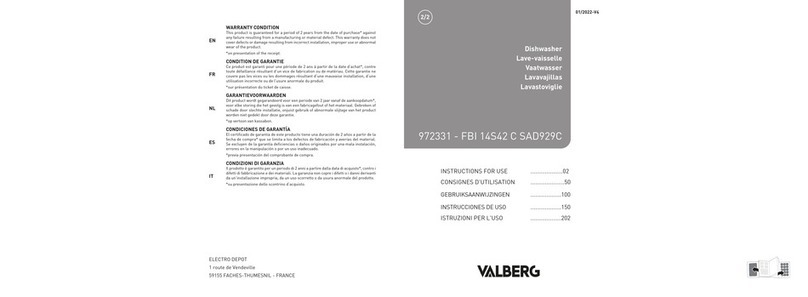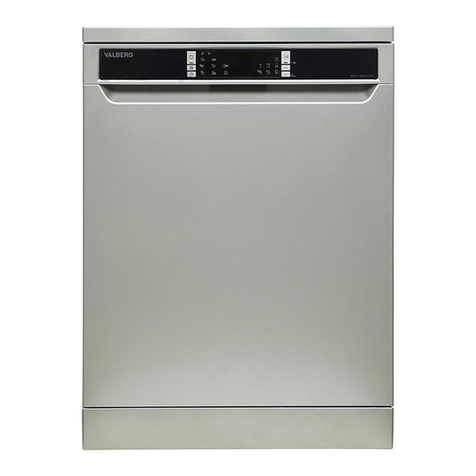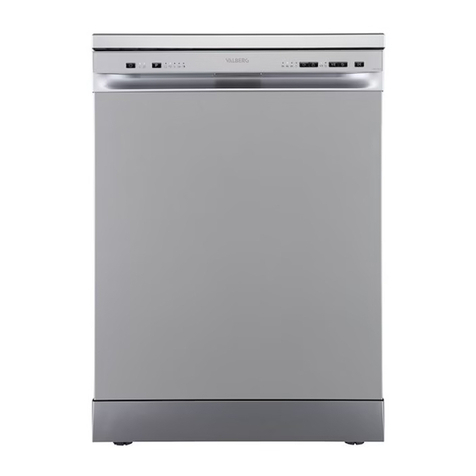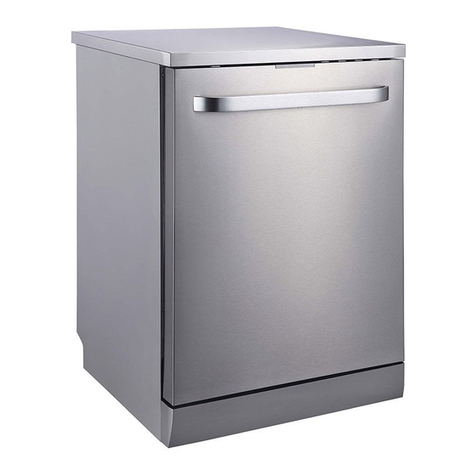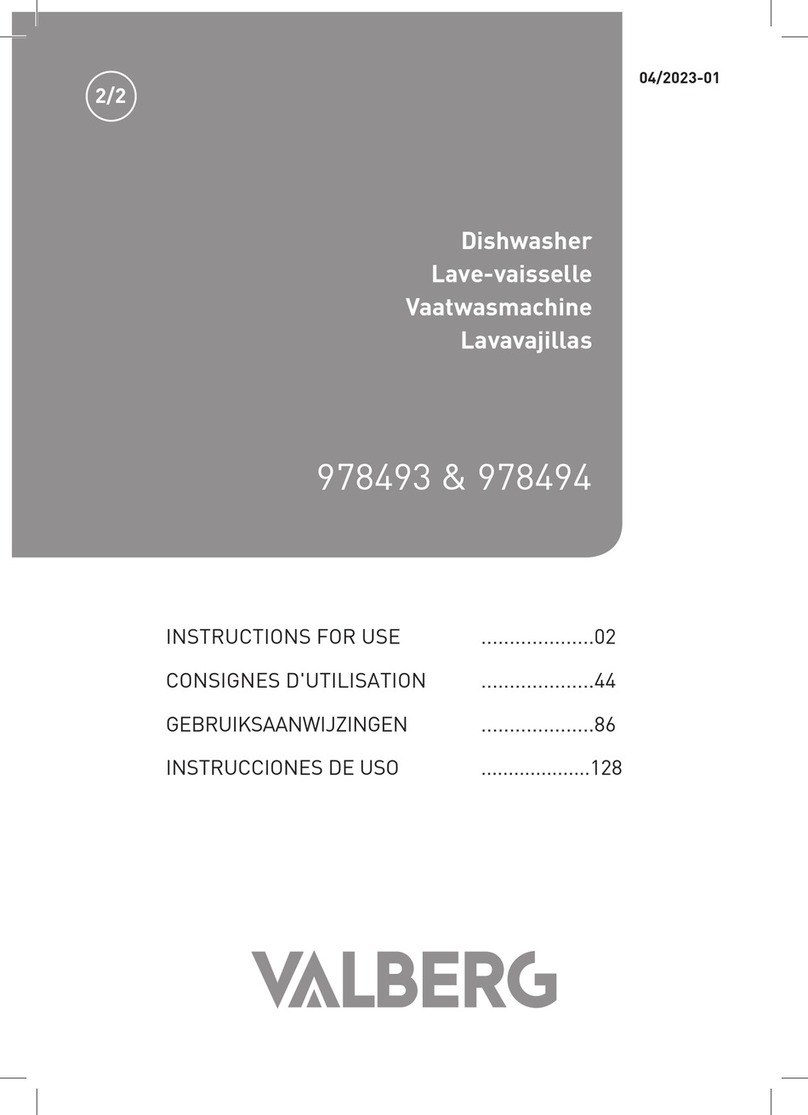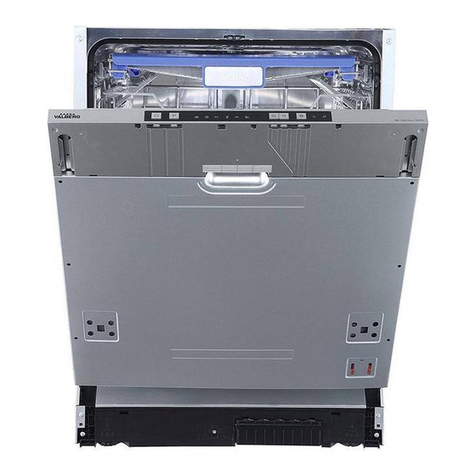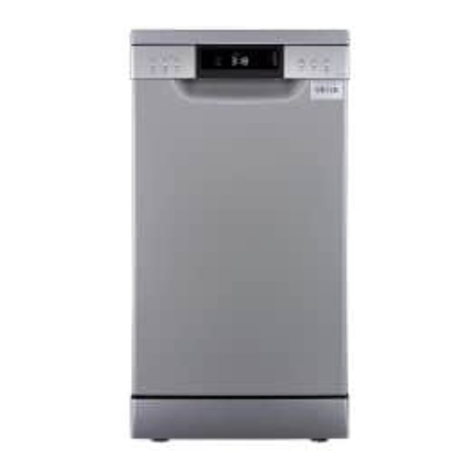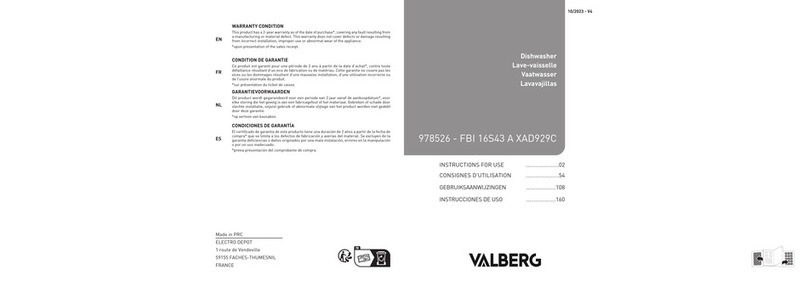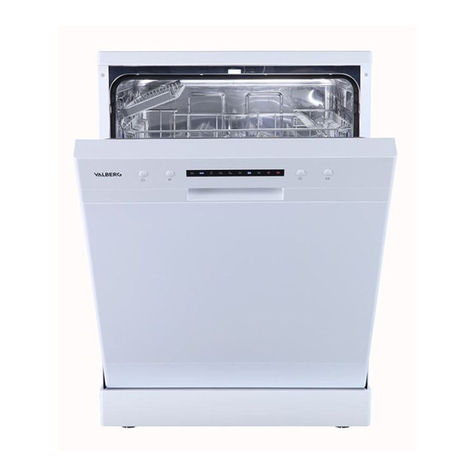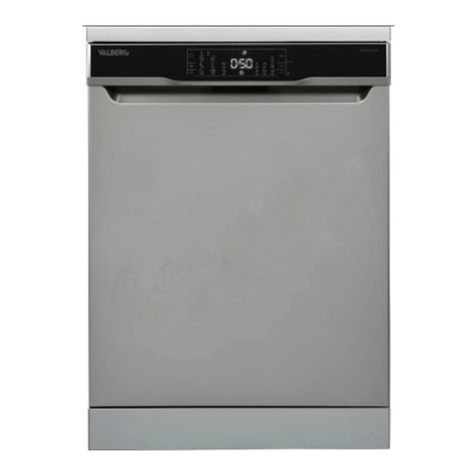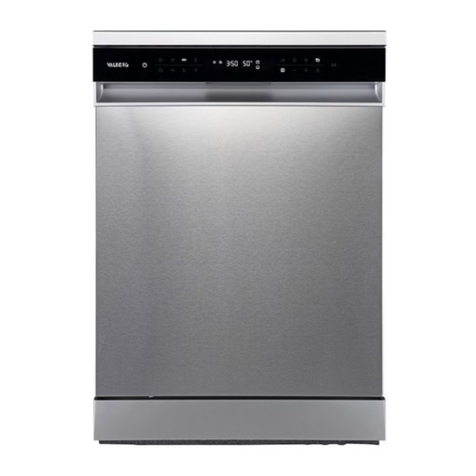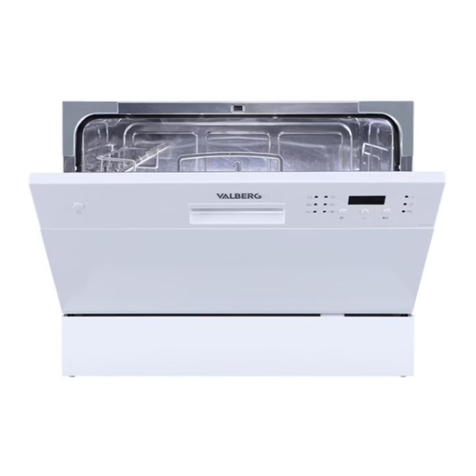
10 11
EN EN
Using the appliance Using the appliance
B B
• If the water supply hoses are new or have not been used for a long time, run the water to
check that it is clear.
• This is necessary to avoid the risk of the water supply being clogged, which could damage
the appliance.
Standard supply hose
WARNING : A hose connected to a sink sprayer can burst
if it is installed in the same water line as the dishwasher.
If your sink is equipped with one, it is recommended to
disconnect the pipe and plug the hole.
How to disconnect the safety supply hose?
1. Shut off the water supply.
2. Unscrew the safety supply hose from the tap.
Drain hose connection
• Insert the drain hose into a drain pipe with a minimum diameter of 4 cm, or let it run into
the sink, making sure to avoid bending or pinching it.
• The height of the drain pipe should not exceed 1000 mm.
• The free end of the hose should not be immersed in water to avoid backflow.
WARNING : Ensure that the drain hose is securely fastened
either in Aposition or in Bposition.
Installation instructions
WARNING : Risk of electric shock
Disconnect the power supply before installing the
dishwasher. Failure to do so could result in death or electric
shock.
Information on electric plugs
WARNING : For your personal safety:
• Do not use an extension cord or adapter with this unit.
• Under no circumstances should you cut or remove the
ground connection from the power cord.
• CAUTION : Risk of overheating, fire and electric shock:
• Please observe the technical data of the device in the data sheet attached to the
notices (voltage, frequency, power, water pressure requirements, etc.) depending on your
installation.
• A 20A circuit breaker or 16A fuse on the appliance's dedicated
circuit must be used.
The cross-section of the supply cables must be 2.5 mm² and the differential switch
30 mA.
• The outlet must be equipped with a protective ground plug. If the plug is not suitable
or is damaged, replace it and check the electrical installation to ensure that it meets
the above requirements.
WARNING:Check thatthe installation isproperlygrounded
before using it.
Water supply and drainage
Cold water connection
• Connect the cold water supply hose to a 1.9 cm threaded fitting and ensure that it is tight.
